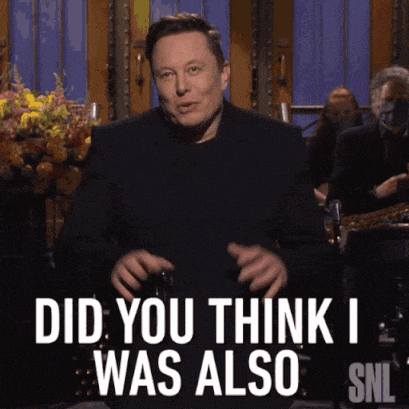What is DeFi and how it aims to support the future of financial system?
Jaspreet Bindra
Senator Elizabeth Warren, who frequently inveighs against cryptocurrency, calls it “the most dangerous part of the crypto world.” She is talking about is DeFi short for Decentralised Finance, a whole dark area of the crypto world, which, if successful, threatens to upend traditional finance in the future. You might have vaguely heard of DeFi; the New York Times defines it as ‘an umbrella term for the part of the crypto universe that is geared toward building a new, internet-native financial system, using blockchains to replace traditional intermediaries and trust mechanisms.’ (https://nyti.ms/3K8fHPG ).
If you have to exchange money or securities today, you need intermediaries like stockbrokers, banks or stock exchanges, and You need to trust these central authorities and believe that they will act in your interest. Successive bank and market scams and scandals, such as the 2008 financial crisis or the PNB crisis in India have shown that this is not always true – your interest being taken care of seems more the exception than the rule. Marc Andreesen, the a16z founder, famously wrote of how ‘software is eating the world’. In the case of DeFi, software ‘eats’ the middlemen. Instead of trading through stock exchanges, people trade with one another directly peer-to-peer, with blockchain-based ‘smart contracts’ fulfilling the role of the intermediary and creating a ‘crypto stock exchange’.
DeFi, though, goes further than a stock exchange and seeks to replicate and replace everything in the financial world – prediction platforms, lending, options, derivatives, the works. It is a shadow Wall Street that is being built by crypto enthusiasts: undergone decentralization, user owned, open sourced, with crypto-renderings of most TradFi (traditional finance) products, with virtually no regulations and bureaucracy. You could actually trade in crypto versions of MSFT, GOOG, or TSLA with the crypto-stocks mirroring the real-life stocks. DeFi is fairly incipient, but it’s not small, the Total Value Locked or TVL of DeFi is estimated to be about $77bn, which would make it the 38th largest bank in the US by deposits.
One of the foundational elements of DeFi are Stablecoins – cryptocurrencies whose values are pegged to the value of fiat currency, like the USD. In the DeFi world, stablecoins are where you keep your liquidity in, to trade tokens, to lend and to exchange. Theoretically, one stablecoin (e.g. the UST, a stablecoin on the Terra blockchain, or the USDT on the Tether blockchain), is pegged to one US Dollar, and therefore needs a one-to-one backing. Thus, if Tether has issued 100 USDTs, they need $100 in reserve for any USDT holder to exchange it back for a dollar whenever she wants. But there is no regulation governing this, and therefore it is highly unlikely that this happens. The uncertainty goes beyond this – Decentralized finance firms even issue loans, their credit cards and have savings accounts, without many of the protection or safety net which is offered by traditional banks. No wonder Elizabeth Warren, and almost every regulator on this planet, are concerned and have begun prosecuting, fining and closing down some of these firms. The fact that most of them are intangible entities on the internet, often without a known physical address, makes this very difficult if not impossible for regulators. No wonder, the NYT calls DeFi a ‘Wild West Wall Street’!
If this indeed is the ‘most dangerous corner of the crypto world’, why is there so much excitement and activity around what is DeFi? Enthusiasts give many reasons: there are technical ones that blockchain is a superior technology to the banks, most of which run on software written in ancient COBOL, a 1960s programming language. Crypto lives on the Internet, and so should Internet banking, they say. For some it is the excitement and challenge of building an entirely new financial system from zero, and to build it in an idealistic format without the ills that plague the current, half-broken, centralised financial system.
For many, including me, the reasons are more philosophical: DeFi is the financial system of the Web 3.0 world. It does away with biased human intermediaries and substitutes them with trust-building technologies like blockchain and open-source software. It makes transactions cheaper and does not always profit only the intermediary. It is almost instantaneous, with T+3 settlements a thing of the past, and much more transparent and corruption-free. Importantly, like Web3, it is a democratising force, which empowers the end user and allows her to do things which only powerful brokers or banks could. It has the potential to remove bias against minorities and spread banking to the hundreds of millions of unbanked, riding on the ubiquity of the Internet and mobile telephony. It is almost idealistic and utopian way to fix what is wrong with Wall Street, and erode its power over corporations, countries and people. Yes, there are teething problems, but ultimately like with all technology, it could become more robust and safer, and eventually replace all banks and exchanges with democratic, user-owned collectives – a Left-of-Centre vision which capitalism would scoff at.
As I researched this article, I found that the first ever book on the stock exchange was written by a Dutch-Jewish trader Joseph De La Vega; he wrote about the inner workings of Amsterdam Stock exchange, which he said was sophisticated but ‘prone to excesses of all kinds. As you read this ancient treatise, you might think he is describing modern DeFi. The title of his seminal book was very apt; he called it the ‘Confusion of Confusions’.
FAQ
DeFi and crypto are the two faces of the same coin. Bitcoin is a decentralized cryptocurrency, similar to a fiat currency that operates on its own blockchain. While DeFi can be considered as a concept covering a range of financial services in the cryptocurrency world. It facilitates the lending, borrowing and trading of cryptocurrencies.
It is possible to earn passive income through DeFi. One can do so by depositing his/her cryptocurrency onto an APY(Annual percentage yield) paying platform or protocol.
DeFi has created a system without barriers thereby enabling a much-unrestricted movement of financial operations accessible to everyone. Also, there is no requirement for minimum funds unlike the traditional savings account with banks. Therefore, both DeFi and banks support the financial system in their own fundamental ways, DeFi seems to be a clear winner in the future.


